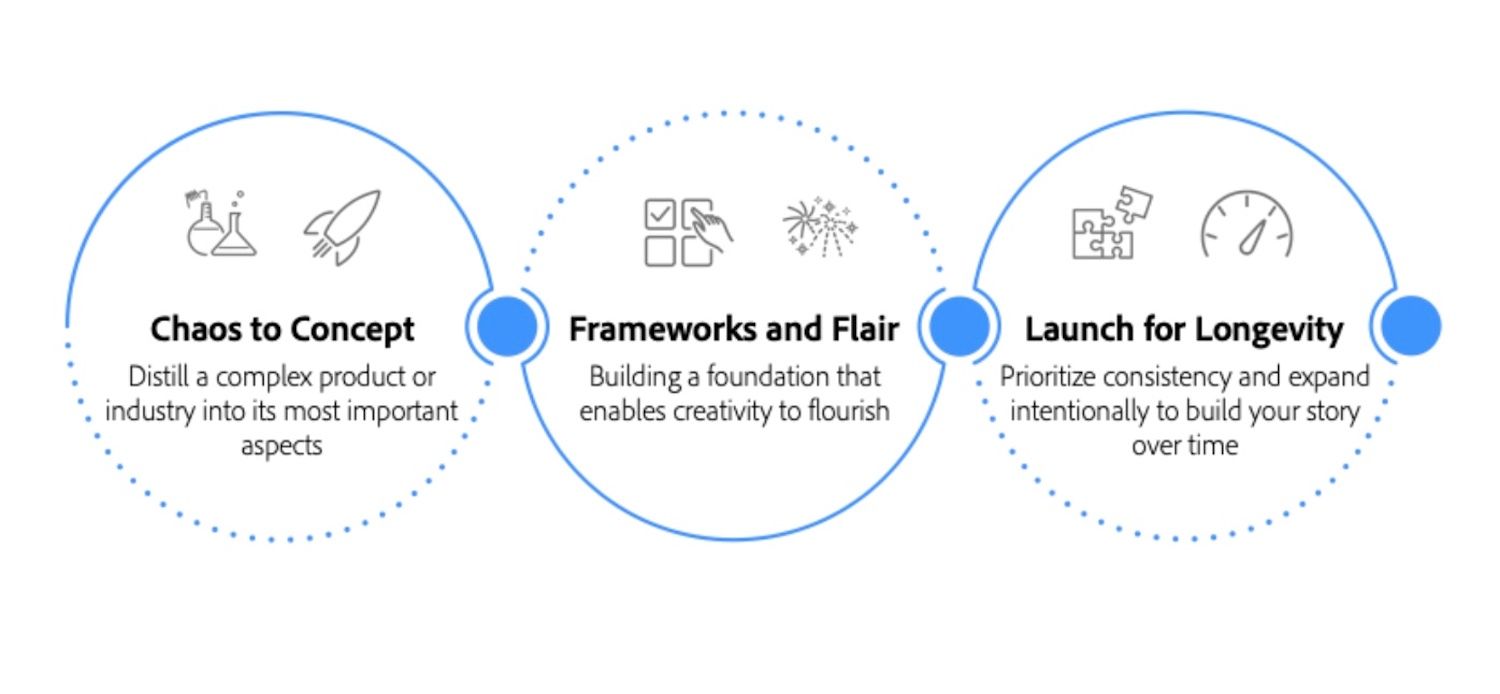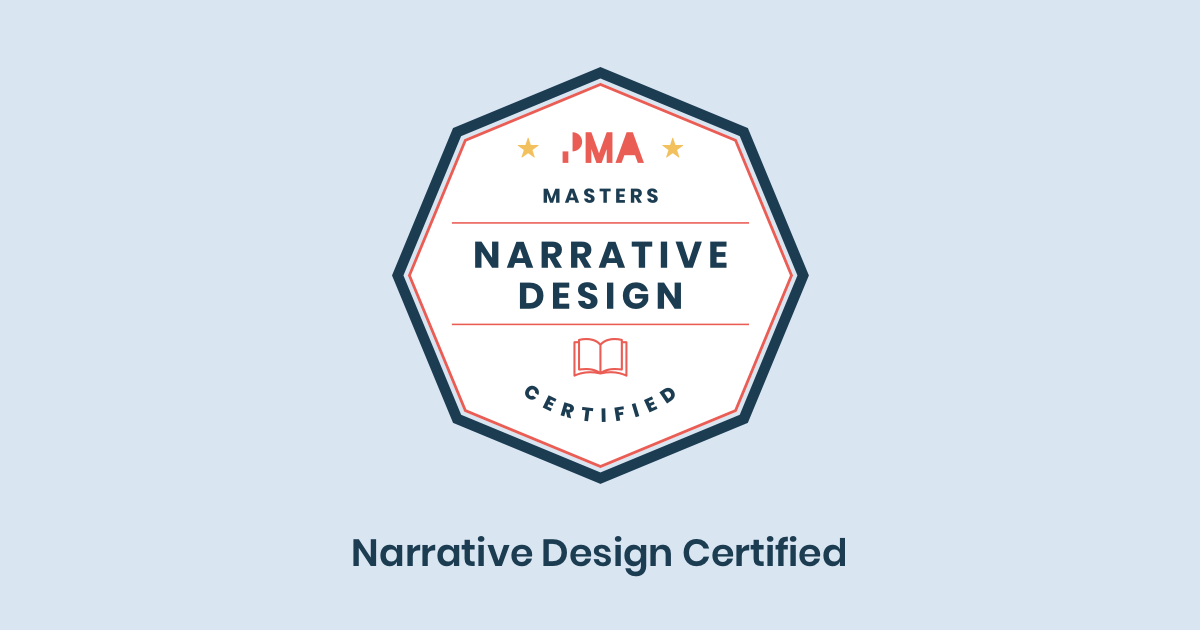In today’s attention economy it can be hard to cut through the noise.
B2B product marketers are faced with creating simple narratives in a world full of jargon to reach their intended target market with the right message. Sometimes forgotten is that these prospects are human, so we aren’t just competing within our category, but also to get them to dedicate mindshare to learning about the products in their already busy lives.
In order to get our prospects to care, we should always look to take our product marketing efforts from good to great.
“Good is the enemy of the great. And that is one of the key reasons why we have so little that becomes great.” – Jim Collins, Good to Great.
Timeless principles
In his best-selling book Good to Great, Jim Collins unearths “timeless principles” which enable some companies to radically outperform their peers over extended periods of time. Selfless leadership, radical focus and transparency, and a culture of discipline are a few of the simple but critical factors that were found in every great company.
We all know the difference when we see a great marketing campaign compared to a good one, whether it’s B2B or B2C. Great marketing captures our attention and makes us want to share it. It can make us smile or feel more informed. It cuts through. After reading Collins’ book, I wanted to seek out some similar principles for Product Marketing, which is about unpacking complexity and turning solutions into stories that will resonate with potential customers.

From chaos to concept
The modern, digital-first consumer is “more intentional, impatient, and demanding and more efficient in their decision making” than previous generations. Many potential customers simply don’t have the time or the bandwidth to fight through endless jargon or unclear value in order to see the benefit of your product. A simple, yet engaging product narrative creates the foundations for prospects to buy into your vision and makes it easier for sales teams to convey the message when you’re not in the room.
This is why it’s so critical for Product Marketers to take their industry and product from chaos to concept.
Cutting through the jargon and distilling the complexities of an industry into a clear, understandable arc creates the right context for your product to showcase its most valuable assets. While it’s tempting to take your product manager or salesperson’s word for it, digging below to the surface to find the pure insight through in-depth research can help you uncover a hidden motivation that you or your competitors have previously been overlooking.
“Product and sales deal with problems and pain. They solve the symptoms of a much larger, usually invisible disease. If you only ever sit with them in this space, you’ll never be able to tell a transcendent story. You’ll never stand out. You’ll never meet your potential. Product marketers have to think bigger. They need to reject the status quo and design a narrative that can’t be ignored.”
Marcus Andrews, Head of Product Marketing at Pendo.io and Host of the Product Marketing Experts podcast
A famous example of this pure insight is Clayton Christensen’s milkshake case study, which supports his 'jobs-to-be-done' framework. By conducting in-depth observations of a fast-food restaurant chain’s customers in their real environment, Christensen and his colleagues were able to uncover the hidden motivations behind why customers bought their milkshakes. (Hint: it wasn’t what the customers told them in the survey).
Rather than buying for taste or flavor, customers were buying the milkshakes because “they faced a long, boring commute and needed something to keep that extra hand busy and to make the commute more interesting"
Product marketers can apply some key practices in order to better perform the narrative creation phase of their role:
Embrace a curious mindset - To uncover the hidden links beneath the surface that will help your narrative resonate with your intended audience. Probe your engineering leads, product managers, customers, and sales teams to find the spark that holds the key to realizing value, and place that at the center of your story. Try to find the unintuitive human motivations that drive the decision to buy or not buy your product.
Be “customer zero” for your story - Analyzing your own journey to understanding a new feature, industry, or service can indicate where opportunities exist to enhance the narrative. Were you bored as you read through the industry primers? Was it hard to wrap your head around a concept? Take note and don’t make the same mistake with your own work.
Share widely and brace for impact - Sharing your work with a wide range of trusted stakeholders will give you ample opportunity to sharpen your work and develop faster feedback loops on the strength of your story. It may bruise your ego a little bit in the process but being open to constructive feedback is a core tenet of powerful story development because it means you are building not just on your own experience, but the experience of others that you may be too close to see.
Frameworks and flair
“I fell into product marketing; I didn’t even know it was a thing!”
I have heard this quote repeated again and again by people I talk to, and this was certainly my experience as well. Because very few actually start their careers as product marketers, newcomers generally enter with either a product, engineering or sales background, combined with a predisposition towards creativity and storytelling that enabled success in that previous role. If you’re anything like me, the initial thought when you heard about all of the frameworks that exist to 'shape' a story such as positioning statements and launch grids, you think "this isn’t for me, I can do it without them". It can often feel like these frameworks act to constrict the creativity that led you into the role.
When applied properly, however, it is clear that balancing frameworks and flair together is not zero-sum, but additive in turning your work from good to great. Frameworks can add the rigor and the foundation which ensure that you can properly direct your creativity or flair to drive the key business outcomes that a narrative or launch set out to deliver.
“Creativity excels within constraints. The framework approach takes away some of the mental gymnastics needed to make a good narrative or launch work and frees your brain up for innovation.”
Mary Sheehan, Head of Product Marketing, Adobe Advertising Cloud, and Host of Women in Product Marketing Podcast
A commonly used example of adding some flair in B2B marketing is the inclusion of a celebrity to drive home core concepts of a Keynote presentation. Not only does including a celebrity draw more attention (and likely more attendees), but if done right, it can play a large role in making a narrative or concept easier to understand, and more memorable.
An example I loved (note: and was not a part of) was the inclusion of Tom Brady at Adobe’s 2020 Virtual Summit to power the launch of the Customer Experience Management playbook, which likened the CMO’s role of architecting their customer experience to be similar to that of a quarterback’s use of a playbook to direct their team throughout a game.
How can you do this?
Leverage what exists, there’s no need to re-invent the wheel - All of the frameworks you could ever need to power your launch efforts already exist, created by PMMs and marketers that came before you. There are timeless tools (a few recent ones I like are April Dunford’s positioning framework and Product Marketing Alliance’s narrative design course) that have been tested and honed over years to help you articulate, road test, and gain internal buy-in for your launches to ensure it has the rigor to cover your bases and drive business outcomes. This will save you time and your sanity, giving you the space to innovate on top of strong foundations.
Get Narrative Design Certified 👇

“A spreadsheet leaves no room for miracles” (Rory Sutherland) - Once you’ve packaged your launch up, it’s time to let your creative brain get to work. Ticking all the boxes on a launch list and pushing it out the door will mean your launch will be polished, but it might look just like everything else. At some point in this phase, it’s critical to remember that your audience is human, and they won’t read your copy or watch your webinar if it’s boring. Be honest with yourself and assess if the launch is looking a little flat.
Launch for longevity
Good product marketing might have a strong launch day, but great product marketing stands the test of time. It’s hard for many brands or consumers to conceptualize adopting or purchasing something that they don’t fully understand, which is why repetition and exposure are so key to building awareness, trust, credibility, and mindshare. While it’s often tempting to rip up the playbook to tell the story of a new feature or take on a competitor, it’s important for your prospects to understand what you stand for, and it’s hard to do this if the narrative continues to shift.
“Great product narratives are all about consistency. By telling one story in multiple acts, you give customers the chance to get very familiar with your narrative. Over time, that familiarity turns into confidence. Once your customers deeply care about who you are and what you do, every product launch works better.”
Kevin Garcia, Head of Product Marketing, Retool
Launching for longevity is about viewing each release as a piece in the jigsaw of your customer’s mind. Unless you are launching a new product or story, every incremental release should be seen as an opportunity to add clarity to the work that your company does on behalf of your customers. While big companies we know and love have done this over decades, some more recent businesses that have risen to prominence such as Stripe (“our mission is to increase the GDP of the internet”) or Shopify (“anyone, anywhere, can start a business”) have done a really effective job in recent years of consistently adding to their company mission through consistent and coherent product releases that showcase what they are about.
How can you do this?
Consistency is key - If you’ve got your positioning right, it should be clear what you want to say. There is nothing revelatory in this, and it’s been a part of marketing forever, but it’s sometimes forgotten in product marketing. Ensure that the core message is clear and omnipresent over time across channels, including marketing, sales, case studies, and more.
·Subtle tweaks and new channels rather than major overhauls - You shouldn’t need to release a new story or narrative every time you want to say something. Building on top of the existing story by finding new and innovative ways to say it or leveraging different channels can be a core element of enabling longevity. Customer stories are a great vessel, which can help the middle of the market view what you’ve been talking about through a lens that makes it easier for them to relate, and clearly see the benefits.
Build a mental FAQ for your next release - The launch date for your product, feature, or narrative should be seen as day one of your next refresh. Rather than dusting your hands off and moving on, keeping an honest, keen eye on how everything lands and the type of questions you get will help you understand what you can learn for your next release.
The concepts and principles in this article are not new or revelatory, and are built on the work of decades of amazing product marketers, and over a century of incredible marketing (if you don’t believe me, go and read a marketing book from the 1960s or 1970s). Ultimately, if you take one thing away from this article it would be to ask yourself, at least once in every piece of work you do: how can I make this great? and often, that’s the spark a project needs.


















 Follow us on LinkedIn
Follow us on LinkedIn




.svg?v=3c4c23cd72)